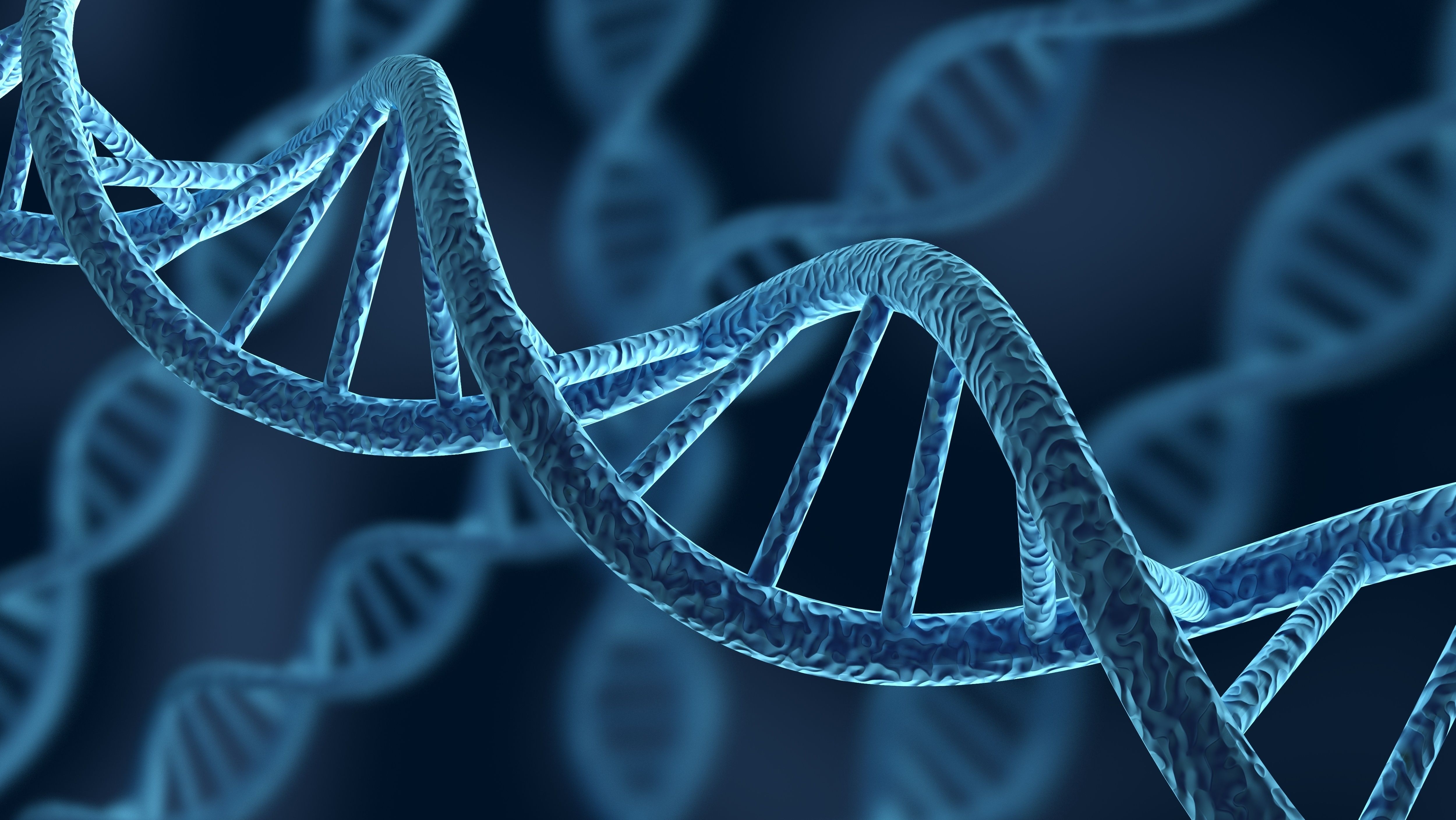News
Article
Higher Count of Mitochondrial DNA Fraction With Breaks Associated With Increased Future Risk of Non-Hodgkin Lymphoma
Author(s):
Although additional studies are needed, findings indicate that mtDNAfb may be a useful biomarker for future risk of non-Hodgkin lymphoma.
With the increase of non-Hodgkin lymphoma (NHL) diagnoses, the cause of non-Hodgkin lymphoma (NHL) is not well characterized despite the known risk factors, according to study authors of research published in JAMA Network Open. Previously, research has identified that an increased mitochondrial DNA copy number (mtDNAcn) is associated as a risk of non-Hodgkin lymphoma (NHL); however, prior to the current study, there was not any data to indicate whether the mitochondrial DNA fraction with breaks (mtDNAfb) is associated with the risk of developing NHL.
DNA strands | BillionPhotos.com | stock.adobe.com

A total of 29,133 male smokers aged 50 to 69 years participated in the study. The participants smoked a median (IQR) of 20.4 (13 to 25) cigarettes daily and had smoked for a median (IQR) of 35.9 (30 to 40) years. By extracting DNA using the phenolchloroform method, investigators used prediagnostic blood samples that were collected from the participants. Further, the study included 107 incident NHL cases, as well as 107 controls within the group of participants. By including both the independent effects of mtDNAcn and mtDNAfb as well as the interaction term in the conditional logistic regression models, investigators tested for a multiplicative interaction between median mtDNAfb and median mtDNAcn and the risk of NHL. Additionally, the association between mtDNAfb and body mass index, number of cigarettes smoked per day, pack-years of smoking, and mtDNAcn was evaluated. Similar analyses were performed to examine the association between NHL and mtDNAcn.
Results indicate that higher mtDNAfb was associated with an increased risk of NHL(median OR, 2.89; 95% CI, 1.40-5.93) in a dose-dependent manner (quartile 2 vs 1 OR, 1.24; 95% CI, 0.43-3.40; quartile 3 vs 1 OR, 3.58; 95% CI, 1.39-9.24; quartile 4 vs 1 OR, 3.42; 95% CI, 1.30- 8.99; P = .004 for trend). Participants with a higher mtDNAfb had a 2.9 times increased risk of developing NHL compared to those with a lower mtDNAfb.
During the follow-up time, a total of 107 incident NHL cases were identified. Unlike the case group, there was a weak association between mtDNAcn and mtDNAfb among the control group (ρ = 0.0025; P = .63 versus ρ = 0.08; P = .006). Investigators had also noted that mtDNAfb may represent a biomarker of genomic instability or risk for oxidative stress, being a potential risk factor for developing NHL.
In the study, NHL was diagnosed by a lymph node biopsy with peripheral flow cytometry analyzing surface markers on B cells. An improved understanding of biomarkers placing patients at risk for NHL will provide health practitioners with the ability to better determine whether these invasive procedures are necessary, as there is no known screening regimen and they are required for diagnosis of NHL. Both mtDNAfb and mtDNAcn have the potential to contribute to risk prediction models and stratification analyses to identify those at high risk for disease before biopsy.
In this study, the ability to conduct NHL subtype-specific analyses was limited due to the sample size and proportion of unspecified NHL diagnoses. As more lymphoma cases are being identified, future analyses may be able to identify increased numbers of NHL, allowing investigators to conduct subtype-specific research. Further, the study evaluated a specific demographic of patients (male smokers aged 50 to 69 years), and additional research will need to be performed to examine the associations between mtDNAfb and risk of NHL in a more diverse population.
Reference
Hosgood HD, Davitt M, Cawthon R, et al. Mitochondrial DNA Fragmentation and Risk of Non-Hodgkin Lymphoma. JAMA Netw Open. 2023;6(8):e2326885. doi:10.1001/jamanetworkopen.2023.26885
Newsletter
Stay informed on drug updates, treatment guidelines, and pharmacy practice trends—subscribe to Pharmacy Times for weekly clinical insights.





